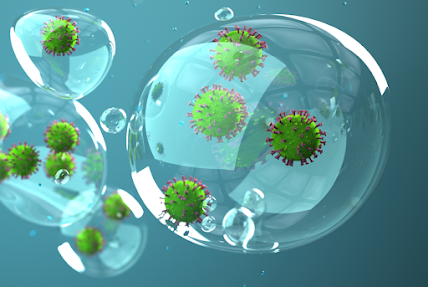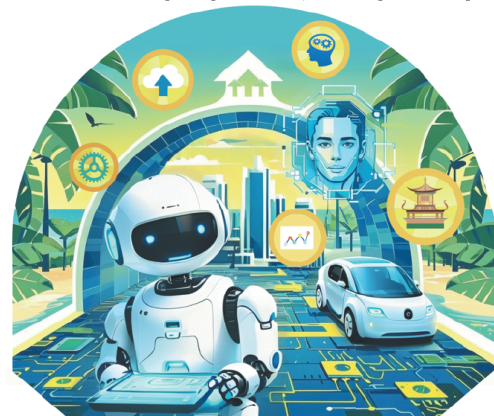Ranking technologies for managing indoor pathogen transmission
JRC foresight expert exercise: what are the most promising current and emerging technologies for being up to the task when the next airborne disease like COVID-19 hits?
In a JRC-HERA study published today, well-established filtration and ventilation topped the list of the highest-impact current technologies for capturing and cleansing germs that spread through the air indoors. UV radiation and nucleic acid amplification came next in the impact ranking.
The foresight study also pinpointed other promising technologies, which require more development or are expected to appear in the future. From these, the impact of plasma-based inactivation, aerosol samplers, biosensors, and direct identification through physico-chemical properties came out on top.
Which technology should we prioritise? A balancing act
The study is the result of a foresight process designed and managed by the JRC and implemented by the JRC and HERA.
The more than 50 experts involved in the process emphasised that, despite the ranking, there is no one-size-fits-all technology for fighting airborne pathogens indoors and decision-makers should carefully weigh solutions based on their needs and the means at their disposal.
Filtration/ventilation, for example, although is time-tested and efficient, has the drawback of using high amounts of electricity. UV radiation can sterilise objects and surfaces, but has limitations in terms of deployment since, depending on the wavelength, it can damage human skin and eyes.
Similarly, plasma discharges – for example when using ozone – can damage cell membranes, inactivating pathogens this way. Yet these are rather expensive to generate and might irritate the respiratory tract and the lungs.
Another technology, aerosol samplers, both the cyclonic/impactor and the condensation type, are efficient at collecting microorganisms and viral particles. Yet, similarly to some alternative detection technologies, they cannot identify what exactly the particles are, so they must be coupled with other technologies.
One such detection technology, biosensors, widely known and used in lateral flow antigen tests (also known as rapid antigen tests), are affordable and require little skill for use. However, their detection level usually lags behind polymerase chain reaction (PCR) tests and they can only be used with condensation-type aerosol samplers.
PCR tests rely on nucleic acid amplification, which is highly efficient in detecting pathogens with known genomic sequences, even if they have lost structural integrity. Unfortunately, it is expensive and time-consuming, so it might not be the most suitable solution in cash-strapped and urgent circumstances.
On the more sophisticated end, spectroscopic and spectrometric techniques can spot pathogens by looking at their physico-chemical properties, but require enhanced Artificial Intelligence for automated deployment and becoming truly disruptive.
Scenario planning: three possible health crises
Other analysed detection (particle counters, cell cultures, next-generation sequencing) and decontamination technologies (electrostatic capture, thermal inactivation, chemical aerosolization, microwave radiation, photocatalytic oxidation) present similar trade-offs to those explained above.
To illustrate that the technology of the choice can depend on the situation, the authors of the study drew up three hypothetical health crises scenarios.
In the first scenario, a tuberculosis endemic broke out in a country ravished by conflict. In this case, detection was considered less important, as tuberculosis requires close contact to spread.
The second scenario, an avian influenza pandemic, meant that more research & development, as well as resources, were available. In such conditions, the experts favoured pairing up cyclonic and impactor aerosol samplers with nucleic acid amplification and biosensors for best detection.
A yearlong burden from diseases such as the flu, COVID-19 or respiratory syncytial virus (RSV), the third scenario, would require filters for sampling and nucleic acid amplification for detection, according to the study participants.
In all scenarios, however, ventilation/filtration was one of the favoured decontamination technologies, building the first line of defence.
Why is this important?
The COVID-19 pandemic demonstrated the damage that airborne pathogens can cause. Other airborne diseases, such as the flu or RSV are also a threat to patients and health systems.
Preparedness for the next wave of infections is crucial. Knowing which technologies are the most impactful can help policymakers and the health industry channel funding the most efficiently.
Indeed, the authors identified investment/funding as the primary driver of change influencing such technologies, followed by regulatory guidance.
Harmonised standards, building codes, and trained personnel were named among the drivers and enablers that shape development and adaption.
Furthermore, in a detailed set of recommendations, the authors stressed the need to come up with a comprehensive strategy for indoor air quality. For this, multisector communities, healthcare workers, building architects, scientists, regulators and civil society representatives should cooperate.
This strategy should provide guidance on healthy concentration limits for pathogens in indoor air. Too many disease-causing agents would harm individuals and communities exposed, but completely stamping out pathogens could harm the human microbiome and immune system.
What is JRC foresight?
Foresight is a crucial tool for future preparedness and resilience. While it does not predict the future, or make projections, through the use of scenarios it can help identify (potential) future developments, emerging risks, and issues decision-makers need to take into account when designing policies.
By incorporating strategic foresight into policymaking, policies can be made more future-proof and resilient to shocks.
This particular study is the result of an inclusive and participatory foresight exercise. More than 50 experts from academia, research and technology organisations, businesses, business associations, non-governmental organisations, consultancies, and public entities filled in a survey and more than 30 participated in workshop discussions.
What is HERA?
The Health Emergency Preparedness and Response Authority (HERA) is a Commission service set up to strengthen Europe’s ability to prevent, detect, and rapidly respond to cross-border health emergencies by ensuring the development, manufacturing, procurement, and equitable distribution of key medical countermeasures. HERA prepares for future emergencies by analysing, identifying and prioritising possible health threats in view of ensuring the development, production and distribution of medicines, vaccines and other crisis-related medical countermeasures, such as gloves and masks.
In a JRC-HERA study published today, well-established filtration and ventilation topped the list of the highest-impact current technologies for capturing and cleansing germs that spread through the air indoors. UV radiation and nucleic acid amplification came next in the impact ranking.
The foresight study also pinpointed other promising technologies, which require more development or are expected to appear in the future. From these, the impact of plasma-based inactivation, aerosol samplers, biosensors, and direct identification through physico-chemical properties came out on top.
Which technology should we prioritise? A balancing act
The study is the result of a foresight process designed and managed by the JRC and implemented by the JRC and HERA.
The more than 50 experts involved in the process emphasised that, despite the ranking, there is no one-size-fits-all technology for fighting airborne pathogens indoors and decision-makers should carefully weigh solutions based on their needs and the means at their disposal.
Filtration/ventilation, for example, although is time-tested and efficient, has the drawback of using high amounts of electricity. UV radiation can sterilise objects and surfaces, but has limitations in terms of deployment since, depending on the wavelength, it can damage human skin and eyes.
Similarly, plasma discharges – for example when using ozone – can damage cell membranes, inactivating pathogens this way. Yet these are rather expensive to generate and might irritate the respiratory tract and the lungs.
Another technology, aerosol samplers, both the cyclonic/impactor and the condensation type, are efficient at collecting microorganisms and viral particles. Yet, similarly to some alternative detection technologies, they cannot identify what exactly the particles are, so they must be coupled with other technologies.
One such detection technology, biosensors, widely known and used in lateral flow antigen tests (also known as rapid antigen tests), are affordable and require little skill for use. However, their detection level usually lags behind polymerase chain reaction (PCR) tests and they can only be used with condensation-type aerosol samplers.
PCR tests rely on nucleic acid amplification, which is highly efficient in detecting pathogens with known genomic sequences, even if they have lost structural integrity. Unfortunately, it is expensive and time-consuming, so it might not be the most suitable solution in cash-strapped and urgent circumstances.
On the more sophisticated end, spectroscopic and spectrometric techniques can spot pathogens by looking at their physico-chemical properties, but require enhanced Artificial Intelligence for automated deployment and becoming truly disruptive.
Scenario planning: three possible health crises
Other analysed detection (particle counters, cell cultures, next-generation sequencing) and decontamination technologies (electrostatic capture, thermal inactivation, chemical aerosolization, microwave radiation, photocatalytic oxidation) present similar trade-offs to those explained above.
To illustrate that the technology of the choice can depend on the situation, the authors of the study drew up three hypothetical health crises scenarios.
In the first scenario, a tuberculosis endemic broke out in a country ravished by conflict. In this case, detection was considered less important, as tuberculosis requires close contact to spread.
The second scenario, an avian influenza pandemic, meant that more research & development, as well as resources, were available. In such conditions, the experts favoured pairing up cyclonic and impactor aerosol samplers with nucleic acid amplification and biosensors for best detection.
A yearlong burden from diseases such as the flu, COVID-19 or respiratory syncytial virus (RSV), the third scenario, would require filters for sampling and nucleic acid amplification for detection, according to the study participants.
In all scenarios, however, ventilation/filtration was one of the favoured decontamination technologies, building the first line of defence.
Why is this important?
The COVID-19 pandemic demonstrated the damage that airborne pathogens can cause. Other airborne diseases, such as the flu or RSV are also a threat to patients and health systems.
Preparedness for the next wave of infections is crucial. Knowing which technologies are the most impactful can help policymakers and the health industry channel funding the most efficiently.
Indeed, the authors identified investment/funding as the primary driver of change influencing such technologies, followed by regulatory guidance.
Harmonised standards, building codes, and trained personnel were named among the drivers and enablers that shape development and adaption.
Furthermore, in a detailed set of recommendations, the authors stressed the need to come up with a comprehensive strategy for indoor air quality. For this, multisector communities, healthcare workers, building architects, scientists, regulators and civil society representatives should cooperate.
This strategy should provide guidance on healthy concentration limits for pathogens in indoor air. Too many disease-causing agents would harm individuals and communities exposed, but completely stamping out pathogens could harm the human microbiome and immune system.
What is JRC foresight?
Foresight is a crucial tool for future preparedness and resilience. While it does not predict the future, or make projections, through the use of scenarios it can help identify (potential) future developments, emerging risks, and issues decision-makers need to take into account when designing policies.
By incorporating strategic foresight into policymaking, policies can be made more future-proof and resilient to shocks.
This particular study is the result of an inclusive and participatory foresight exercise. More than 50 experts from academia, research and technology organisations, businesses, business associations, non-governmental organisations, consultancies, and public entities filled in a survey and more than 30 participated in workshop discussions.
What is HERA?
The Health Emergency Preparedness and Response Authority (HERA) is a Commission service set up to strengthen Europe’s ability to prevent, detect, and rapidly respond to cross-border health emergencies by ensuring the development, manufacturing, procurement, and equitable distribution of key medical countermeasures. HERA prepares for future emergencies by analysing, identifying and prioritising possible health threats in view of ensuring the development, production and distribution of medicines, vaccines and other crisis-related medical countermeasures, such as gloves and masks.
#youngscientist #sciencerocks #physicist #scientist #laboratory #bio #ScienceEducation #STEMforKids #ParentingTips#sciencefather #SciComm (Science Communication)
#STEMLearning #ScienceExperiments#YoungScientist#ScienceAwards#STEMRecognition#FutureScientists#YoungAchievers
Follow us on
Twitter :https://twitter.com/youngsc06963908
Linkedin- : https://www.linkedin.com/in/shravya-r...
Pinterest : https://in.pinterest.com/youngscienti...
Blog : https://youngscientistaward.blogspot....
Tumblur : https://www.tumblr.com/blog/shravya96
Instagram : https://www.instagram.com/shravya_pre...
#STEMLearning #ScienceExperiments#YoungScientist#ScienceAwards#STEMRecognition#FutureScientists#YoungAchievers
Follow us on
Twitter :https://twitter.com/youngsc06963908
Linkedin- : https://www.linkedin.com/in/shravya-r...
Pinterest : https://in.pinterest.com/youngscienti...
Blog : https://youngscientistaward.blogspot....
Tumblur : https://www.tumblr.com/blog/shravya96
Instagram : https://www.instagram.com/shravya_pre...




Comments
Post a Comment